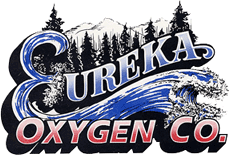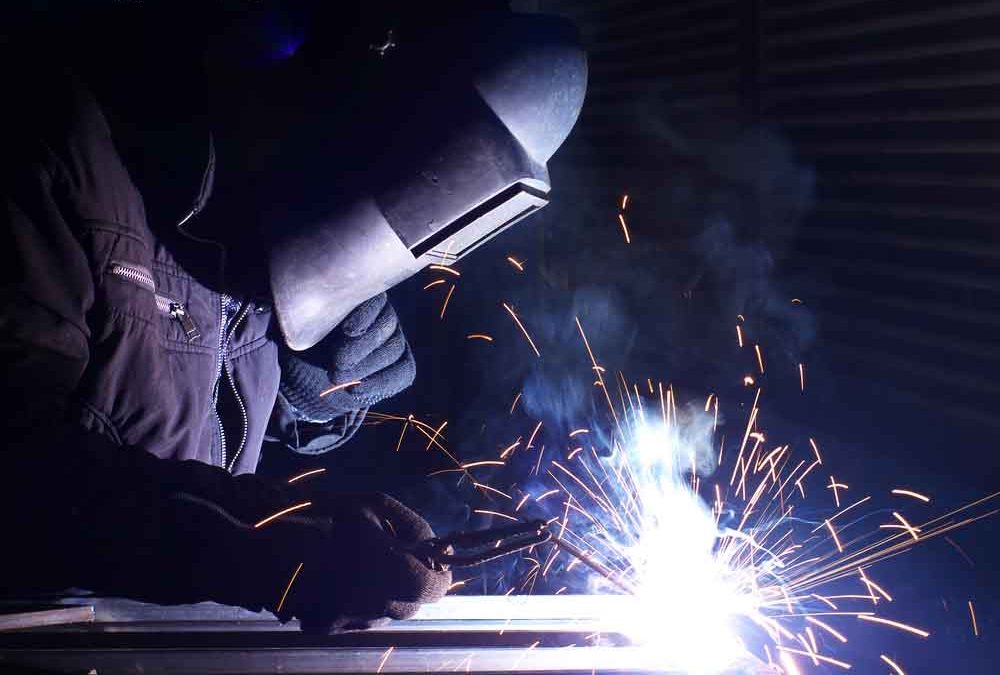CO2 is one of the most commonly used reactive gases in TIG, MIG and MAG welding. It’s the least expensive of the shielding gases and can be used alone without a inert gas. Argon is another common shielding gas that produces a narrower penetration profile, which offers a clean, small and robust joint weld. Although argon can be used alone, adding carbon dioxide to argon deepens penetration and stiffens the arc, improving out of position welding. Argon carries less heat than pure CO2 and produces less spatter. The combination of argon and CO2 provides an inexpensive, accurate and clean weld.
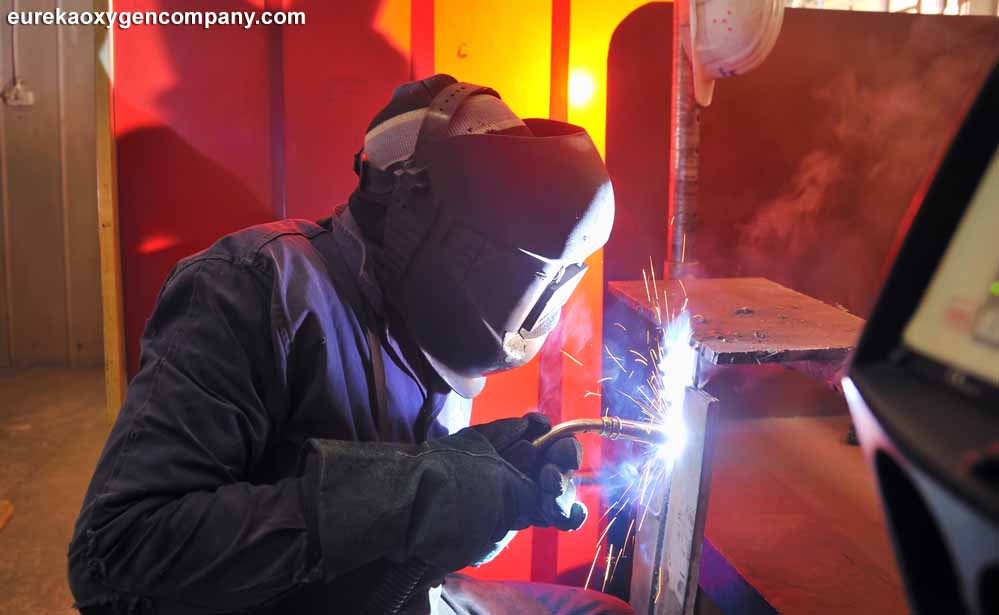
Argon CO2 blends are versatile mixtures for welding carbon, low-alloy, and some stainless steel. Increasing the CO2 content will increase weld penetration and bead wetting characteristics. At higher current levels and CO2 content, increased spatter may result. Argon CO2 blends can be used to join a wide range of material thickness while utilizing a variety of modes of metal transfer.
The most common argon – CO2 mixtures are:
C2 or 2% Carbon Dioxide and 98% Argon
C25 or 25% Carbon Dioxide and 95% Argon
100% Carbon Dioxide
100% Argon
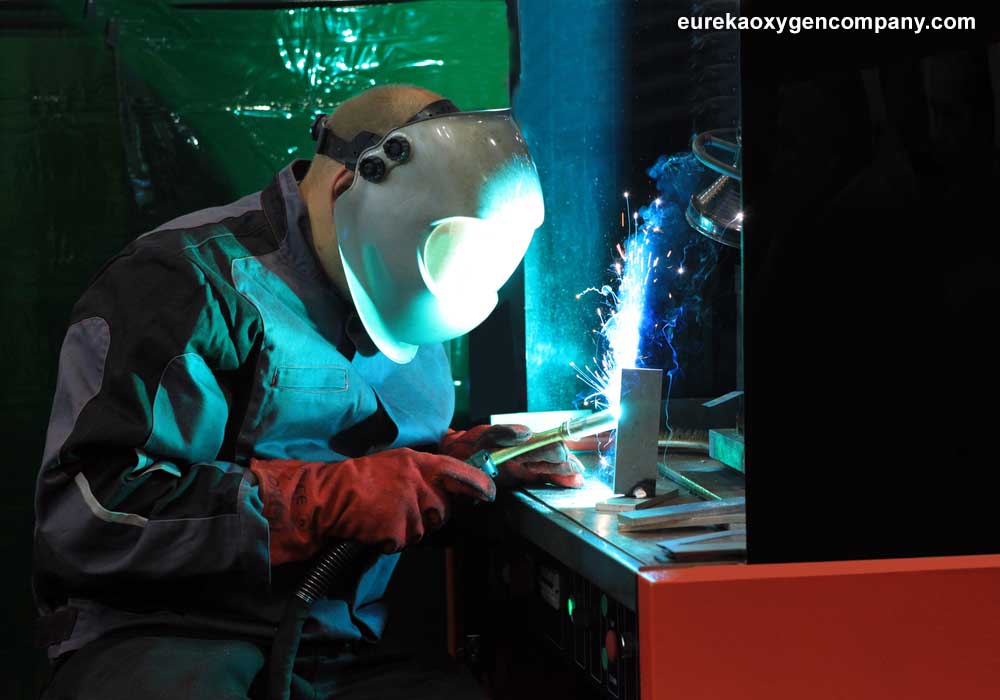
The most commonly used shielding gas for home and hobby MIG welding is C25. It is well-liked, especially for home welding, because it walks the middle ground between cost and quality of the finished weld. C25 is a good multipurpose gas mixture that is a desirable balance between the very narrow weld profile produced when welding with 100% argon and the volatility of welding with 100% carbon dioxide.
Welding of stainless steel is typically done with C2 or 2% Carbon Dioxide and 98% Argon. The lower CO2 content means a lower weld carbon content, which is preferred for stainless steel welding. Both carbon and oxygen react with the stainless steel in the heat of the arc, resulting in some oxidation and reduction in corrosion resistance. In the case of ferritic stainless steels, used when some increased corrosion resistance is needed, argon blends with 5 to 10 percent CO2 (matched with an appropriate filler wire) generally produce acceptable weld chemistry. This approach minimizes weld carbon increases, but it can reduce weld travel speed.
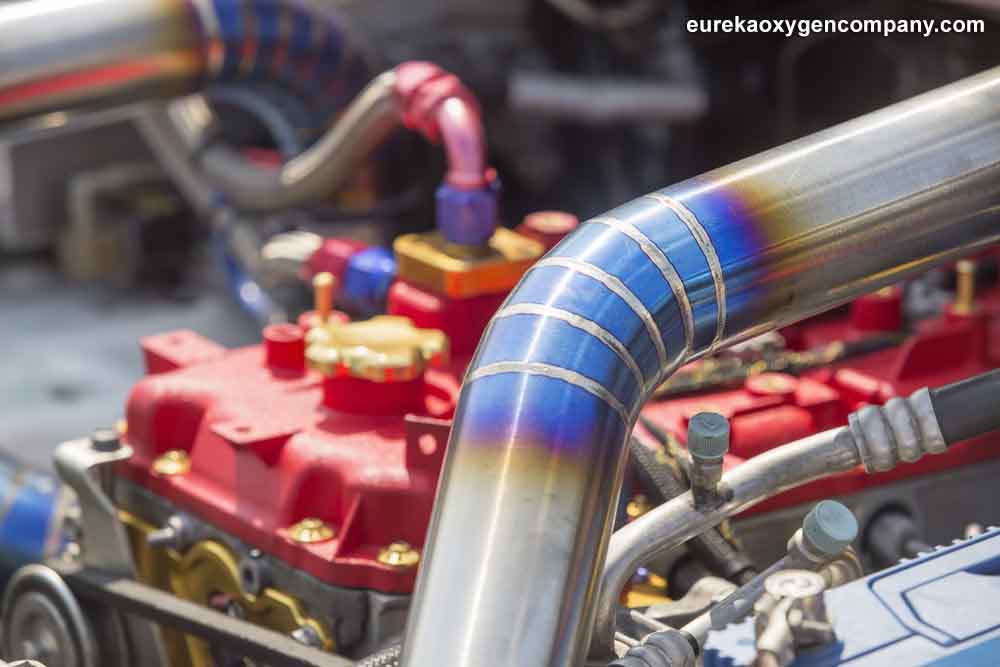
100% CO2 is the most common of the reactive gases used in MIG welding, and it is also the least expensive, making it a good choice when material costs are the main priority. Pure CO2 provides very deep weld penetration, which is useful for welding thick material. However, it also produces a less stable arc and more spatters than when it is mixed with other gases. If weld quality and appearance is important, a gas blend may be more appropriate.
100% Argon can be used to MIG weld steel, but you’re likely to get an unattractive weld bead that is tall and narrow, often with an undercut that weakens the weld. They are also known for losing ductility, so the welds can be brittle.
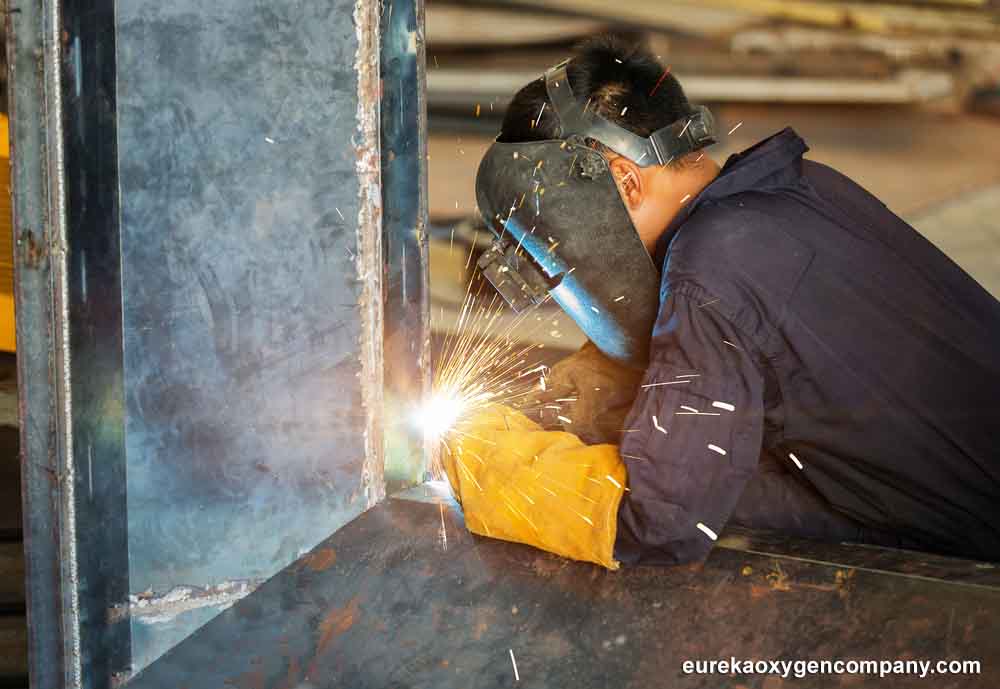
Shielding gas selection is critical to the successful joining of metal. In many welding applications, argon CO2 blends can help improve productivity and performance, especially if conventional and pulsed spray transfer techniques are used. Our pros at Eureka Oxygen have decades of experience to share, so give us a call or stop by if you have any questions about welding!
